Dynamics 1st Edition Ashish Tewari
Visit to download the full and correct content document: https://ebookmass.com/product/foundations-of-space-dynamics-1st-edition-ashish-te wari/
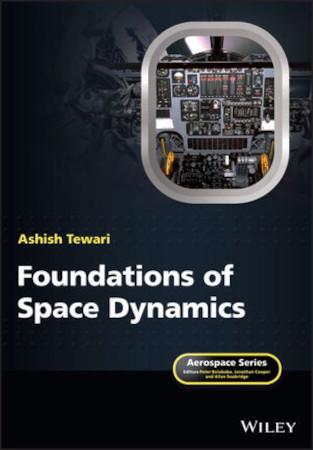
More products digital (pdf, epub, mobi) instant download maybe you interests ...

Synthesis of Medicinal Agents from Plants 1st Edition
Ashish Tewari
https://ebookmass.com/product/synthesis-of-medicinal-agents-fromplants-1st-edition-ashish-tewari/
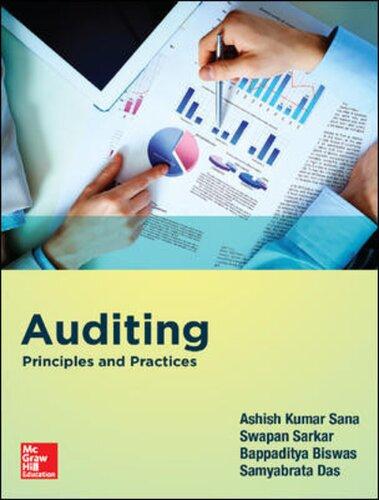
Auditing: Principles and Practices 1st Edition Ashish Kumar Sana
https://ebookmass.com/product/auditing-principles-andpractices-1st-edition-ashish-kumar-sana/
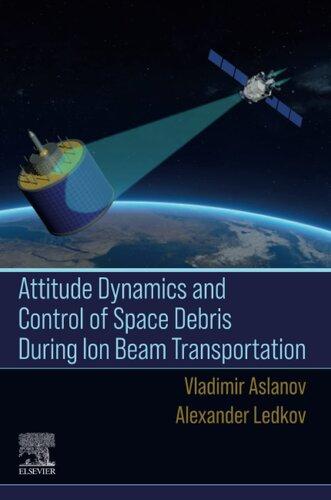
Attitude Dynamics and Control of Space Debris During Ion Beam Transportation Vladimir S. Aslanov
https://ebookmass.com/product/attitude-dynamics-and-control-ofspace-debris-during-ion-beam-transportation-vladimir-s-aslanov/

Introduction to Modern Dynamics: Chaos, Networks, Space, and Time 2nd Edition David D. Nolte
https://ebookmass.com/product/introduction-to-modern-dynamicschaos-networks-space-and-time-2nd-edition-david-d-nolte-2/
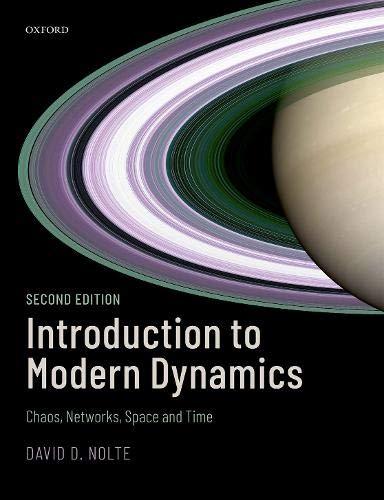
Introduction to Modern Dynamics: Chaos, Networks, Space, and Time 2nd Edition David D. Nolte
https://ebookmass.com/product/introduction-to-modern-dynamicschaos-networks-space-and-time-2nd-edition-david-d-nolte/
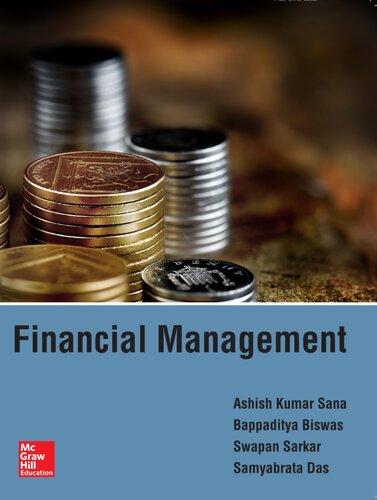
Financial Management Ashish Kumar Sana
https://ebookmass.com/product/financial-management-ashish-kumarsana/

The Moral Foundations of Parenthood Joseph Millum
https://ebookmass.com/product/the-moral-foundations-ofparenthood-joseph-millum/
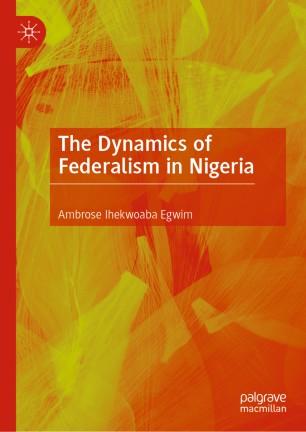
The Dynamics of Federalism in Nigeria 1st ed. Edition Ambrose Ihekwoaba Egwim
https://ebookmass.com/product/the-dynamics-of-federalism-innigeria-1st-ed-edition-ambrose-ihekwoaba-egwim/
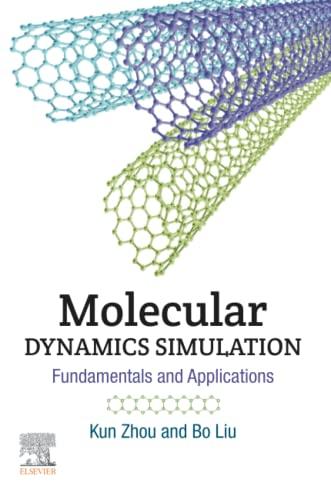
Molecular Dynamics Simulation 1st Edition Kun Zhou
https://ebookmass.com/product/molecular-dynamics-simulation-1stedition-kun-zhou/
FOUNDATIONSOFSPACE DYNAMICS
SustainableAviationTechnologyandOperations: ResearchandInnovationPerspectives
EssentialsofSupersonicCommercialAircraft ConceptualDesign
DesignandDevelopmentofAircraftSystems, 3rdEdition
SabatiniDec2020
TorenbeekJuly2020
SeabridgeApril2020
DesignofUnmannedAerialSystemsSadraeyApril2020
FlightDynamicsandControlofAeroandSpace Vehicles
FuturePropulsionSystemsandEnergySourcesin SustainableAviation
YedavalliFebruary2020
FarokhiJanuary2020
ConceptualAircraftDesign:AnIndustrialApproachKunduApril2019
HelicopterFlightDynamics:IncludingaTreatmentof TiltrotorAircraft,3rdEdition
PadfieldNovember2018
SpaceFlightDynamics,2ndEditionKlueverMay2018
PerformanceoftheJetTransportAirplane:Analysis Methods,FlightOperations,andRegulations
DifferentialGameTheorywithApplicationstoMissiles andAutonomousSystemsGuidance
AdvancedUAVAerodynamics,FlightStabilityand Control:NovelConcepts,TheoryandApplications
YoungOctober2017
FaruqiMay2017
MarquesandDaRonchApril2017
IntroductiontoNonlinearAeroelasticityDimitriadisApril2017
IntroductiontoAerospaceEngineeringwithaFlight TestPerspective
CordaMarch2017
AircraftControlAllocationDurham,BordignonandBeckJanuary2017 RemotelyPilotedAircraftSystems:AHumanSystems IntegrationPerspective
Cooke,Rowe,Bennett.Jr. andJoralmon October2016
AdaptiveAeroservoelasticControlTewariMarch2016 TheoryandPracticeofAircraftPerformanceKundu,PriceandRiordanNovember2015
TheGlobalAirlineIndustry,SecondEditionBelobaba,Odoniand Barnhart July2015
ModelingtheEffectofDamageinComposite Structures:SimplifiedApproaches
IntroductiontoAircraftAeroelasticityandLoads, 2ndEdition
AircraftAerodynamicDesign:Geometryand Optimization
KassapoglouMarch2015
WrightandCooperDecember2014
SóbesterandForresterOctober2014
TheoreticalandComputationalAerodynamicsSenguptaSeptember2014 AerospacePropulsionLeeOctober2013
AircraftFlightDynamicsandControlDurhamAugust2013 CivilAvionicsSystems,2ndEditionMoir,SeabridgeandJukesAugust2013 ModellingandManagingAirportPerformanceZografos,Andreattaand Odoni July2013
AdvancedAircraftDesign:ConceptualDesign, AnalysisandOptimizationofSubsonicCivil Airplanes
DesignandAnalysisofCompositeStructures:With ApplicationstoAerospaceStructures,2ndEdition
TorenbeekJune2013
KassapoglouApril2013 AircraftSystemsIntegrationofAir-LaunchedWeaponsRigbyApril2013
SeemoreAerospaceSeriestitlesatwww.wiley.com
FOUNDATIONSOFSPACE DYNAMICS
FirstEdition
AshishTewari
IndianInstituteofTechnologyKanpur
Thiseditionfirstpublished2021 ©2021JohnWiley&SonsLtd.
Allrightsreserved.Nopartofthispublicationmaybereproduced,storedinaretrievalsystem,ortransmitted,inanyformor byanymeans,electronic,mechanical,photocopying,recordingorotherwise,exceptaspermittedbylaw.Adviceonhowto obtainpermissiontoreusematerialfromthistitleisavailableathttp://www.wiley.com/go/permissions.
TherightofAshishTewaritobeidentifiedastheauthorsofthisworkhasbeenassertedinaccordancewithlaw.
RegisteredOffices
JohnWiley&Sons,Inc.,111RiverStreet,Hoboken,NJ07030,USA
JohnWiley&SonsLtd,TheAtrium,SouthernGate,Chichester,WestSussex,PO198SQ,UK
EditorialOffice
TheAtrium,SouthernGate,Chichester,WestSussex,PO198SQ,UK
Fordetailsofourglobaleditorialoffices,customerservices,andmoreinformationaboutWileyproductsvisitusat www.wiley.com.
Wileyalsopublishesitsbooksinavarietyofelectronicformatsandbyprint-on-demand.Somecontentthatappearsin standardprintversionsofthisbookmaynotbeavailableinotherformats.
LimitofLiability/DisclaimerofWarranty
Whilethepublisherandauthorshaveusedtheirbesteffortsinpreparingthiswork,theymakenorepresentationsorwarranties withrespecttotheaccuracyorcompletenessofthecontentsofthisworkandspecificallydisclaimallwarranties,including withoutlimitationanyimpliedwarrantiesofmerchantabilityorfitnessforaparticularpurpose.Nowarrantymaybecreatedor extendedbysalesrepresentatives,writtensalesmaterialsorpromotionalstatementsforthiswork.Thefactthatan organization,website,orproductisreferredtointhisworkasacitationand/orpotentialsourceoffurtherinformationdoesnot meanthatthepublisherandauthorsendorsetheinformationorservicestheorganization,website,orproductmayprovideor recommendationsitmaymake.Thisworkissoldwiththeunderstandingthatthepublisherisnotengagedinrendering professionalservices.Theadviceandstrategiescontainedhereinmaynotbesuitableforyoursituation.Youshouldconsult withaspecialistwhereappropriate.Further,readersshouldbeawarethatwebsiteslistedinthisworkmayhavechangedor disappearedbetweenwhenthisworkwaswrittenandwhenitisread.Neitherthepublishernorauthorsshallbeliableforany lossofprofitoranyothercommercialdamages,includingbutnotlimitedtospecial,incidental,consequential,orother damages.
LibraryofCongressCataloging-in-PublicationData
Names:Tewari,Ashish,author.
Title:Foundationsofspacedynamics/AshishTewari.
Description:Firstedition.|Hoboken,NJ:Wiley,[2020]|Series: Aerospaceseries|Includesbibliographicalreferencesandindex.
Identifiers:LCCN2020033397(print)|LCCN2020033398(ebook)|ISBN 9781119455349(paperback)|ISBN9781119455332(adobepdf)|ISBN 9781119455325(epub)|ISBN9781119455301(obook)
Subjects:LCSH:Aerospaceengineering.|Astrodynamics.|Orbital mechanics.
Classification:LCCTL545.T3852020(print)|LCCTL545(ebook)|DDC 629.4/11–dc23
LCrecordavailableathttps://lccn.loc.gov/2020033397
LCebookrecordavailableathttps://lccn.loc.gov/2020033398
CoverDesign:Wiley
CoverImage:©PhilipWallick/GettyImages
Typesetin10/12ptTimesLTStdbySPiGlobal,Chennai,India
10987654321
Tothelovingmemoryofmydaughter,Manya(24.1.2000-9.7.2019)
3KeplerianMotion41
3.1TheTwo-BodyProblem41
3.2OrbitalAngularMomentum43
3.3OrbitalEnergyIntegral45
3.4OrbitalEccentricity46
3.5OrbitEquation49
3.5.1EllipticOrbit 53
3.5.2ParabolicOrbit 56
3.5.3HyperbolicOrbit 56
3.5.4RectilinearMotion 58
3.6OrbitalVelocityandFlightPathAngle60
3.7PerifocalFrameandLagrange’sCoefficients63 Exercises65
4TimeinOrbit69
4.1PositionandVelocityinanEllipticOrbit70 4.2SolutiontoKepler’sEquation75
4.2.1Newton’sMethod 76
4.2.2SolutionbyBesselFunctions 78
4.3PositionandVelocityinaHyperbolicOrbit80
4.4PositionandVelocityinaParabolicOrbit84
4.5UniversalVariableforKeplerianMotion86 Exercises88 References89 5OrbitalPlane91 5.1RotationMatrix91
5.2EulerAxisandPrincipalAngle94
5.3ElementaryRotationsandEulerAngles97
5.4Euler-AngleRepresentationoftheOrbitalPlane101
5.4.1CelestialReferenceFrame 103
5.4.2Local-HorizonFrame 104
5.4.3ClassicalEulerAngles 106
5.5Planet-FixedCoordinateSystem111 Exercises114
6OrbitalManoeuvres117
6.1Single-ImpulseOrbitalManoeuvres119
6.2Multi-impulseOrbitalTransfer123
6.2.1HohmannTransfer 124
6.2.2RendezvousinCircularOrbit 127
6.2.3OuterBi-ellipticTransfer 130
6.3ContinuousThrustManoeuvres133
6.3.1PlanarManoeuvres 134
6.3.2ConstantRadialAccelerationfromCircularOrbit 135
6.3.3ConstantCircumferentialAccelerationfromCircularOrbit
6.3.4ConstantTangentialAccelerationfromCircularOrbit 139 Exercises141 References143
7RelativeMotioninOrbit145
7.1Hill-Clohessy-WiltshireEquations148
7.2LinearState-SpaceModel151
7.3ImpulsiveManoeuvresAboutaCircularOrbit153
7.3.1OrbitalRendezvous
7.4KeplerianRelativeMotion155 Exercises158
8Lambert’sProblem161 8.1Two-PointOrbitalTransfer161
8.1.1TransferTriangleandTerminalVelocityVectors
8.2.1LocusoftheVacantFocii
8.2.2Minimum-EnergyandMinimum-EccentricityTransfers
8.3Lambert’sTheorem168
8.3.1TimeinEllipticTransfer
8.3.2TimeinHyperbolicTransfer
8.3.3TimeinParabolicTransfer
8.4SolutiontoLambert’sProblem177
8.4.1ParameterofTransferOrbit
8.4.2StumpffFunctionMethod
8.4.3HypergeometricFunctionMethod
9OrbitalPerturbations191
9.1PerturbingAcceleration191
9.2OsculatingOrbit192
9.3VariationofParameters194
9.3.1LagrangeBrackets
9.4LagrangePlanetaryEquations199
9.5GaussVariationalModel209
9.6VariationofVectors214
9.7MeanOrbitalPerturbation219
9.8OrbitalPerturbationDuetoOblateness220
9.8.1Sun-SynchronousOrbits
9.8.2MolniyaOrbits
9.9EffectsofAtmosphericDrag227
9.9.1LifeofaSatelliteinaLowCircularOrbit
9.9.2EffectonOrbitalAngularMomentum
9.9.3EffectonOrbitalEccentricityandPeriapsis
Preface
FoundationsofSpaceDynamics iswrittenasatextbookforstudents,aswellasareadyreference coveringtheessentialconceptsforpracticingengineersandresearchers.Itintroducesareaderto thebasicaspectsofbothorbitalmechanicsandattitudedynamics.Whilemanygoodtextbooks areavailableonorbitalmechanicsandattitudedynamics,thereisaneedforadirect,concise, yetrigoroustreatmentofboththetopicsinasingletextbook.Importantderivationsfrombasic principlesarehighlighted,whileofferinginsightsintothephysicalprincipleswhichcanoften behiddenbymathematicaldetails.Whiletheemphasisisonanalyticalderivations,theessential computationaltoolsarepresentedwhereverrequired,suchastheiterativeroot-findingmethods andthenumericalintegrationofordinarydifferentialequations.
Theobjectiveofthisbookistoprovideaphysicallyinsightfulpresentationofspacedynamics. Theusageofsimpleideasandnumericaltoolstoillustrateadvancedconceptsisinspiredbythe workoftheoriginalmasters(Newton,Liebnitz,Laplace,Gauss,etc.),andiscombinedwiththe applicationandterminologyofmodernspacedynamics.
Astudentofspacedynamicsinthepastgenerallypossessedastrongbackgroundinanalyticalmechanics,oftenreinforcedbysuchclassicaltreatisesasthosebyWhittaker,Lanczos, Truesdell,andMach.Today,theexposuretoanalyticaldynamicsisoftenbaseduponasingle undergraduatecourse.Thisbookthereforeincludesabasicintroductiontoanalyticalmechanics bybothNewtonianandLagrangianapproaches.
Thecontentsofthetextbookarearrangedsuchthattheymaybecoveredintwosuccessive courses: SpaceDynamicsI couldfocusonChaps.1–7and11,whilethefollowingcourse, Space DynamicsII,couldcoverChaps.8–10and12,supplementedbyasemesterprojectexploringa specificresearchtopic.However,thearrangementofthechaptersinthebookofferssufficient flexibilityforthemtobecoveredinasinglecomprehensivecourse,ifsorequired.Therearea multitudeofexercisesattheendofthechapterswhichcanserveashomeworkassignmentsand quizproblems.Solutionstoselectedexercisesisalsoprovided.
IwouldliketothanktheeditorialandproductionstaffofWiley,Chichester,fortheir constructivesuggestionsandvaluableinsightsduringthepreparationofthemanuscript.
May2020
1 Introduction
Thischaptergivesanintroductiontothebasicfeaturesofspaceflight,whichispredominatedby thequietspaceenvironmentandgravity.Theessentialdifferenceswithatmosphericflightare discussed,andtheimportanttimescalesandframesofreferenceforspaceflightaredescribed. Topicsinspacedynamicsareclassifiedasthetranslationalmotion(orbitalmechanics)androtationalmotion(attitudedynamics)ofarigidspacecraft.Classificationofthevariouspractical spacecraftisgivenaccordingtotheirmissions.
1.1SpaceFlight
Spaceflight referstomotionoutsidetheconfinesofaplanetaryatmosphere.Itisdifferentfrom atmosphericflightinthatnoassistancecanbederivedfromtheatmosphericforcestosupport avehicle,andnobenefitofplanetaryoxygencanbeutilizedforpropulsion.Apartfromthese majordisadvantages,spaceflighthastheadvantageofexperiencingno(orlittle)dragdueto theresistanceoftheatmosphere;henceaspacecraftcanachieveamuchhigherflightvelocity thananaircraft.Sinceatmosphericliftisabsenttosustainspaceflight,aspacecraftrequires suchhighvelocitiestobalancetheforceofgravitybyacentrifugalforceinordertoremain inflight.Thetrajectoriesofspacecraft(called orbits)–beinggovernedsolelybygravity–are thusmuchbetterdefinedthanthoseofaircraft.Sincegravityisaconservativeforce,spaceflight involvesaconservationofthesumofkineticandpotentialenergies,aswellasthatoftheangular momentumaboutafixedpoint.Therefore,spaceflightismucheasiertoanalyzemathematically whencomparedtoatmosphericflight.
1.1.1AtmosphereasPerturbingEnvironment
Whencantheeffectsoftheatmospherebeconsiderednegligiblesothatspaceflightcancome intoexistence?Theatmosphereofaplanetarybody–beingboundbygravity–becomes lessdenseasthedistancefromtheplanetarysurface(called altitude)increases,owingto theinverse-squarediminishingoftheaccelerationduetogravityfromtheplanetarycentre. Foranatmospherecompletelyatrest,thisrelationshipbetweentheatmosphericdensity,
FoundationsofSpaceDynamics,FirstEdition.AshishTewari. ©2021JohnWiley&SonsLtd.Published2021byJohnWiley&SonsLtd.
��,andthealtitude, z,canbederivedfromthefollowingdifferentialequationof aerostatic equilibrium (Tewari,2006):
where p referstotheatmosphericpressure,and g the accelerationduetogravity prevailing atagivenaltitude.Forasphericalbodyofradius r0 ,thegravityobeystheinverse-squarelaw discoveredbyNewton,givenby
where g0 istheaccelerationduetogravityatthesurfaceofthebody(i.e.,at z = 0).When Eq.(1.2)issubstitutedintoEq.(1.1),andthethermodynamicpropertiesoftheatmosphericgases aretakenintoaccount,thedifferentialequation,Eq.(1.1),canbeintegratedtoyieldanalgebraic relationshipbetweenthe atmosphericdensity, ��,andthealtitude, z,calledanatmosphericmodel. ForEarth’satmosphere,onesuchmodelisthe U.S.StandardAtmosphere1976 (Tewari,2006), whosepredicteddensityvariationwiththealtitudeintherange0 ≤ z ≤ 250kmislistedin Table1.1.ItisevidentfromTable1.1thattheatmosphericdensity, ��,canbeconsideredto benegligibleforaflightfor z ≥ 120kmaroundEarth.Asimilar(albeitsmaller)valueof �� is obtainedonMarsat z = 120km.Hence,forbothEarthandMars, z = 120kmcanbetakento betheboundaryabovewhichthe space begins.
Theflightofaspacecraftaroundalargesphericalbodyofradius r0 isassumedtotakeplace outsidetheatmosphere,(suchas z > 120kmforEarthandMars),andisgovernedbythegravity ofthebody,withaccelerationgivenbyEq.(1.2).Space-flighttrajectoriesarewelldefined orbits
Altitude, z (km)Density, �� kg∕m3
duetothesimplenatureofEq.(1.2).However,sincetheatmosphericdensityinaverylow orbit(e.g.,120 < z < 250kmonEarth),albeitquitesmall,isnotexactlyzero,theflightof aspacecraftcanbegraduallyaffected,tocausesignificantdeviationsoveralongperiodof timefromtheorbitspredictedbyEq.(1.2).Thisisduetothefactthattheatmosphericforces andmomentsaredirectlyproportionaltotheflightdynamicpressure,1∕2��v2 ,where v isthe flightspeed.Thehighorbitalspeed, v,requiredforspaceflightmakesthedynamicpressure appreciable,eventhoughthedensity, ��,isbyitselfnegligible.Theatmospheric drag (theforce resistingthemotion)causesaslowbutsteadydeclineintheflightspeed,untilthelatterfalls belowthemagnitudewhereanorbitalmotioncanbesustained.Thusatmosphericdragcan causealow-orbitingsatellitetoslightlydecayinaltitudeaftereveryorbit,andtoultimately enterthelower(dense)portionsoftheatmosphere,wherethemechanicalstresscreatedbythe everincreasingdynamicpressure,aswellastheheatgeneratedbyatmosphericfriction,lead toitsdestruction.Therefore,forpredictingthelifeofasatelliteinaloworbit,theatmospheric effectsmustbeproperlytakenintoaccount.Figure1.1showsanexampleofthedecayinthe orbitofaspacecraftinitiallyplacedintoacircularorbitof z = 200kmaroundEarth.Inthis simulationobtainedbya Runge-Kuttamethod (AppendixA),thespacecraftisassumedtobea sphereof1mdiameter,withaconstantfree-moleculardragcoefficientof2.0(Tewari,2006). Asseeninthefigure,thealtitudedecaysquiterapidlyasthenumberoforbits, N ,increases. TheinitialaveragerateofaltitudelossseeninFig.1.1–1kmper4orbits–islikelytoincrease asthespacecraftdescendslower,therebyencounteringahigherdensity.Whenthespacecraft isplacedinacircularorbitof z = 180km,itsaltitudedecaysveryrapidly,anditre-entersthe
Figure1.1 Decayintheorbitduetoatmosphericdragforaspacecraftinitiallyplacedinacircularorbit of z = 200kmaroundEarth.
Figure1.2 Decayintheorbitduetoatmosphericdragforaspacecraftinitiallyplacedinacircularorbit of z = 180kmaroundEarth. atmosphereafteronly3.5orbits(Fig.1.2).Hence,thelifeofthespacecraftisonlyabout3.5 revolutionsinacircularorbitofaltitude180kmaboveEarth.AsFigs.1.1and1.2indicate,a stableorbitaroundEarthforthisspacecraftshouldhave z > 200kmatalltimes.
Apartfromtheatmosphericeffects,thereareotherenvironmentalperturbationstoaspacecraft’sflightaroundacentralbody,whichisassumedtobesphericalasrequiredbyEq.(1.2). Thesearethegravityoftheactual(non-spherical)shapeofthecentralbody,aswellasthe gravityofotherremotelargebodies,andthesolarradiationpressure.However,sucheffectsare typicallysmallenoughtobeconsideredsmallperturbationswhencomparedtothespherical gravityfieldofthecentralbodygivenbyEq.(1.2).SucheffectscanberegardedassmallperturbationsappliedtotheorbitgovernedbyEq.(1.2),andshouldbecarefullymodelledinorder topredicttheactualmotionofthespacecraft.
1.1.2GravityastheGoverningForce
Spaceflightisprimarilygovernedbygravity.“Governing”impliesdictatingthepathagiven bodydescribesinathree-dimensionalspace.Aircraftandrocketflightsare not primarilygovernedbygravity,becausethereareotherforcesactingonthebody,suchastheliftandthethrust, whichareofcomparablemagnitudestothatofgravityandthereforedeterminetheflightpath. DiscoveredandproperlyanalyzedforthefirsttimebyNewtoninthelate17th century,gravity canbeexpressedsimply,buthasprofoundconsequences.Forexample,byapplyingNewton’s
lawofgravitation,itcouldhavebeeninferredthattheuniversecannotbestatic,becausegravity wouldcausealltheobjectstocollapsetowardsasinglepoint.However,thissimplefactescaped thenoticeofallphysicistsrangingfromNewtonhimselftoEinstein,untilitwasobservedby Hubblein1924thattheuniverseisexpandingataratewhichincreaseswiththedistancebetween anytwoobjects.Areadermaybecautionedagainstthecomplacencywhichoftenarisesby treatingthemotiongovernedbygravityassimple(eventrivial)tounderstand.Therearemany surprisingandinterestingconsequencesofgravitybeingthegoverningforceinflight,suchas Kepler’sthirdlawofplanetarymotion,whichimpliesthatthetimeperiodofanorbitingbody dependsonlyuponthemeanradius,andisindependentoftheshapeoftheorbit.Alargerpart ofacourseonspacedynamicsinvolvesunderstandinggravityanditseffectsonthemotionofa bodyinspace.
1.1.3TopicsinSpaceDynamics
Spacedynamicsconsistsoftwoparts:(a) orbitalmechanics,whichdescribesthetranslation inspaceofthecentreofmassofarigidbodyprimarilyundertheinfluenceofgravity,and(b) attitudedynamics,whichisthedescriptionoftherotationoftherigidbodyaboutitsowncentre ofmass.Whilethesetwotopicsarelargelystudiedseparately,insomecasesorbitalmechanics andattitudedynamicsareintrinsicallycoupled,suchaswhentherigidbodyexperiencesan appreciablegravity-gradienttorqueduringitsorbit.Furthermore,whendesigninganattitude controlsystemforaspacecraft,itisnecessarytoaccountforitsorbitalmotion.Therefore,while elementsoforbitalmechanicsandattitudedynamicscanbegraspedseparately,theirpractical applicationinvolvesacombinedapproach.
1.2ReferenceFramesandTimeScales
Spaceflightrequiresadefinitebackgroundofobjectstomeasuredistances,aswellastoorient thespacecraftinspecificdirections.Sincefixedobjectsarehardtocomebyinpractice,navigationandattitudedeterminationarenon-trivialproblemsinspaceflight.Suchaproblemdoes notexistforthemotiontakingplaceon,orverycloseto,asolidsurface,whereground-fixed objectscanserveasusefulreferencesforbothnavigationandorientationofthevehicles.
1.2.1SiderealFrame
Threemutuallyperpendicularstraightlinesjoiningdistantobjectsconstitutea referenceframe. Generally,distantobjectsintheuniversearemovingwithrespecttooneanother;hencethe straightlinesjoiningthemwouldrotate,aswellaseitherstretchoutorcontractwithtime.Supposeonecanfindtwoobjectswhicharefixedrelativetoeachother.Thenastraightlinejoining themwouldbefixedinlength,andavectorpointingfromoneobjecttotheotherwouldalways haveaconstantdirection.Areferenceframeconsistingofaxeswhichhavefixeddirectionsis saidtobea siderealframe.Therearecertaindirectionswhichcanbeusedtoorientasidereal frame.Forexample,theorbitalplaneofEartharoundthesun,calledthe ecliptic,intersects Earth’sequatorialplanealongastraightlinecalledthe lineofnodes.The nodes arethetwo specificpointswherethislineintersectsEarth’sorbit,asshowninFig.1.3.Oneofthetwo
Distant star
Equatorial plane
meridian
Obliquityof ecliptic
Eclipticplane Decending node
Earth Longitude of equinox
Ascending node Vernal equinox Apparent sun
Figure1.3 Theequinoctialsiderealframe (I, J, K),theeclipticsynodicframe (i, j, k),andEarthcentred celestialmeridian.
nodesisan ascendingnode,wheretheapparentmotionofthesunasseenfromEarth(called the apparentSun)occursfromthesouthtothenorthoftheequator.Thishappensatthe vernal equinox,occurringeveryyeararoundMarch21.The descendingnode oftheapparentsunisat the autumnalequinox,whichtakesplacearoundSeptember22.Sincethevernalequinoxpoints inaspecificdirectionfromthecentreofEarth,itcanbeusedtoorientoneoftheaxesofthe siderealframe,astheaxis I inFig.1.3.Anotheraxisofthesiderealframecanbetakentobe normaltoeithertheeclipticortheequatorialplane(axis K inFig.1.3),andthethirdaxiscan bechosentobeperpendiculartothefirsttwo(axis J inFig.1.3).
TherateofrotationofEarthonitsownaxis(normaltotheequatorialplane)isfromthewest totheeast,andcanbemeasuredinasiderealreferenceframeorientedwiththevernalequinox direction.Thisrateiscalledthe siderealrotationrate,andwouldbethetruerotationrateof Earthifthevernalequinoxwereaconstantdirection.A siderealday istheperiodofrotation ofEarthmeasuredfromthevernalequinox.Ifthesunisusedfortimingtherotationalrateof Earth,theperiodfromnoontonoonisa meansolarday (m.s.d.)of24-hourduration.However, themeansolardayisnotthetruerotationalrateofEarthbecauseofEarth’sorbitaroundthe sun,whichalsotakesplacefromthewesttotheeast.Tocalculatethesiderealdayfromthe meansolarday,acorrectionmustbeappliedbyaddingtheaveragerateatwhichEarthorbits thesun.The tropicalyear istheperiodofEarth’sorbitaroundthesunmeasuredfromonevernal equinoxtothenext,andequals365.242meansolardays.Thisimpliesthatthemeanapparent sunisslightlylessthanonedegreeperday(360∘ ∕365.242).Suchacorrectiongivesthesidereal
dayasthefollowing:
or23hr.,56min.,4.0904s.
Unfortunately,thevernalequinoxisnotaconstantdirectionbecauseoftheslow precession ofEarth’saxis(thustheequatorialplane)causedbythegravitationalinfluenceofthesunand themoon(calledthe luni-solarattraction).Whenaspinningrigidbody,suchasEarth,isacted uponbyanexternaltorque,suchasduetothegravityofthesunandthemoon,itsspinaxis undergoesacomplexrotationcalled“precession”and“nutation”,whichwillbeexplainedin detailinChapter11.Thisrotationoftheequatorialplanecausesthetwoequinoxestoshift towardsthewest,andisthuscalledthe precessionoftheequinoxes.Theperiodoftheprecessionisabout25772yr.,whichimpliesthatthesiderealdaydiffersonlyslightlyfromthetrue rotationalperiodofEarth.Italsomeansthatanequinoctialsiderealreferenceframe,suchas theframe (I, J, K) inFig.1.3,rotatesveryslowlyagainstabackgroundofdistantstars.Hence thevernalequinox(andtheequinoctialsiderealreferenceframe)canbeapproximatedtobe thefixedreferencesformostspaceflightapplications.However,foralongflighttimeofseveralyears’duration,thecalculationsmustbebroughttoacommonreferenceataspecifictime (calledan epoch1 )byapplyingthenecessarycorrections,whichtakeintoaccounttheslow movementofthevernalequinoxtowardsthewest.Theequinoxisgivenforvariousepochsby the InternationalEarthRotationandReferenceSystemsService (IERS)intermsofthelongitudeoftheequinoxmeasuredfroma celestialmeridian (seeFig.1.3).Theinclinationof Earth’sspinaxisfromthenormaltotheeclipticiscalledthe obliquityoftheecliptic (Fig.1.3), andalsovarieswithtimeduetothe nutation causedbytheluni-solarattraction.(Theprecessionandnutation,discussedindetailinChapter11,causeEarth’sspinaxistorotatewithtime duetotheluni-solarattraction.)Thevalueoftheobliquityoftheeclipticinthecurrentepoch ismeasuredbyIERStobeabout23∘ 26’21”.TheperiodofnutationofEarth’sspinaxisis about41000yr.,whichisconsiderablylongerthantheperiodofitsprecession.TheprecessionandnutationareexplainedinChapter11whenconsideringtherotationofarigidbody (suchasEarth).
ApartfromtheprecessionandthenutationofEarth’sspinaxis,thereisalsoaprecessionof theeclipticcausedbythegravitationalattractionoftheotherplanets.Thisisamuchsmaller variationintheequinoxes(about100timessmallerthanthatcausedbyluni-solarattraction).
Sincethevernalequinoxmovesslightlywestwardeveryyear,thetropicalyearisnotthe trueperiodofrevolutionofEarthinitsorbitaroundthesun.Thetrueperiodofrevolutionis the siderealyear,whichismeasuredbytimingthepassageofEarthagainstthebackgroundof distantstars,andequals365.25636meansolardays.Thusatropicalyearisshorterthanthe actualyearby20hr.,40min.,and42.24s.
1 Anepochisamomentintimeusedasareferencepointforatime-varyingastronomicalquantity,suchastheorbital elementsspecifyingtheshapeandtheplaneofanorbit,thedirectionofthespinaxisofabody,thecoordinatesof importantcelestialobjects,etc.
1.2.2CelestialFrame
Foramotiontakingplaceinsidethesolarsystem,anytwostars(exceptthesun)appeartobe fixedforthedurationofthemotion.Hence,areferenceframeconstructedoutofthreemutually perpendicularaxes,eachofwhicharepointingtowardsdifferentdistantstars,wouldappearto befixedinspace,andcanserveasasiderealreferenceframe.Areferenceframefixedrelative todistantstarsistermeda celestialreferenceframe.Forexample,therateofrotationofEarth aboutitsownaxiscanbemeasuredbyanobserverstandingastridetheNorthPolebytiming therateatwhichastraightlinejoiningEarthtoadistantstar,calledacelestialmeridian(see Fig.1.3),appearstorotate.ThisrategivesthetruerotationaltimeperiodofEarth,calledthe stellarday,whichismeasuredbyIERStobe23hr.,56min.,4.0989s.Hence,thesiderealday isshorterthanthestellardaybyabout8.5 × 10 3 s.
1.2.3SynodicFrame
Whentwoobjectsorbitoneanotheratnearlyconstantratesonafixedplane,areferenceframe canbedefinedbytwoofitsaxesontheplaneofrotationandrotatingattheconstantrate,and thethirdaxisnormaltotheplane.Sucharotatingreferenceframeiscalleda synodicframe.An exampleofasynodicframeisthe eclipticframe,whichisareferenceframeconstructedoutof theeclipticplane,suchastheframe (i, j, k) inFig.1.3.Themotionofanobjectmeasuredrelative toasynodicframemustbecorrectedbyavectorsubtractionofthemotionoftheframeitself, asexemplifiedbythecalculationofthesiderealdayfromtheobservedrotationintheecliptic frame.Theeclipticframehasbeenusedasareferencesincetheearliestdaysofastronomical observations.Thedivisionofthecircleinto360∘ aroseoutoftheapparentmotionofthesun perday,whichsubtendsanarcofonediameterevery12hourswhenseenfromEarth.Since themoon’sapparentdiameterfromEarthisroughlythesameasthatofthesun,theeclipsesof thesunandthemoonareobservedintheecliptic(thusthename).However,sincethemoon’s orbitalplanearoundEarthistilted ±5 1∘ relativetotheecliptic,theeclipseshappenonlyalong theintersection(i.e.,thelineofnodes)ofthetwoplanes.
TheEarth-moonlineprovidesanothersynodicreferenceframeforspaceflight.The Earthandthemoondescribecoplanarcirclesaboutthecommoncentreofmass(calledthe barycentre)every27.32meansolardaysrelativetothevernalequinox(calleda sidereal month).Thisrotationalperiodappearsinthesynodicframetobe29.53meansolardays(a synodicmonth)fromonenewmoontothenext,whichisobtainedfromthesiderealmonthby subtractingtherateofrevolutionofEarth-moonsystemaroundthesun.
1.2.4JulianDate
Insteadofthe calendaryear of365meansolardays,thetropicalyearof365.242meansolar days,andthesiderealyearof365.25636meansolardays,itismuchmoreconvenienttousea Julianyear of365.25meansolardays,whichavoidstheadditionofleapyearsincarryingout astronomicalcalculations.A Juliandaynumber (JDN )isdefinedtobethecontinuouscount ofthenumberofmeansolardayselapsedsince12:00noon universaltime (UT)onJanuary1, 4713BC.Universaltimereferstothetimetakenas12:00noonwhenthesunisdirectlyoverthe Greenwichmeridian(whichisdefinedtobezerolongitude).TheJuliandaynumber0isassigned
tothedaystartingatthattimeontheJulianprolepticcalendar.The Juliandate ofageneraltime instantisexpressedastheJDNplusthefractionofthe24-hourdayelapsedsincethepreceding noonUT.JuliandatesarethusexpressedasaJuliandaynumberplusadecimalfraction.For example,theJuliandatefor10:00a.m.UTonApril21,2020,isgivenbyJ2458960.91667, andtheJDNis2458960.Epochsarelistedinephemerischartsandnauticalalmanacsaccording totheirJuliandates.HenceaJuliandateservesasacommontimemeasureforastronautical calculationsinvolvingtwoeventsseparatedintime.
ComputationoftheJuliandate(JD)fromaGregoriancalendardateiscomplicateddueto thethreecalendarcyclesusedtoproducetheJuliancalendar,namelythesolar,thelunar,and theindictioncyclesof28,19,and15yearperiods,respectively(Seidelmann,1992).Aproduct ofthesegivesthe Julianperiod of7980years.TheJulianperiodbeginsfrom4713BC,which ischosentobethefirstyearofsolar,lunar,andindictioncyclesbeginningtogether.Thenext epochwhenthethreecyclesbegintogetherwillhappenatnoonUTonJanuary1,3268.The followingconversionformulafortheJDN,truncatedtothelastinteger,usesthenumberingof themonthsfromJanuarytoDecemberas M = 1, 2, … , 12;theGregoriancalendaryearsare numberedsuchthattheyear1BCistheyearzero, Y = 0,(i.e.,2BCis Y =−1,4713BCis Y =−4712,etc.);andthedaynumber, D,isthelastcompleteddayofthemonthuptonoonUT:
ThisformulacalculatestheJDNfor09:25a.m.UTonJune25,1975,bytaking Y = 1975, M = 6, D = 24,andyieldsthelasttruncatedintegervalueas JDN = 2442589.Thenthetime elapsedfromnoonUTonJune24to09:25a.m.UTonJune25isaddedasafractiontogive thefollowingJuliandate:
JD = JDN + 12 + 9 + 25∕60 24 = 2442589.892361 .
AnepochintheJuliandateisdesignatedwiththeprefix J ,andthesuffixbeingtheclosest Gregoriancalendardate.Forexample, J 2000refersto12:00noonUTonJanuary1,2000,and hastheJuliandateof2451545.Similarly,theepoch J 1900,whichoccursexactly100Julian years before 12:00noonUTonJanuary1,2000,mustreferto12noonUTonJanuary0,1900; henceitsdateintheGregoriancalendarisDecember31,1899,anditsJuliandateis2415020. Thedifferenceintheepochs J 2000and J 1900istherefore2451545 2415020 = 36525mean solardays(whichisexactly100Julianyears).
SinceJuliandaynumberswiththeepoch J 4712canbecomeverylarge,itisoftenconvenient tousealaterepochforcomputing JD.Epochscanbechosenwithsimpler JDN figures,such as12:00hr.UTonNovember16,1858,whichhas JDN = 2400000.ThenJuliandatescanbe convertedtothisepochbyreplacing JD with JD 2400000.Forexample,theJuliandatefor 09:25a.m.UT,June25,1975,convertedtotheepochofNov.16,1858,is JD = 42589.892361. Fortheconsistencyofdata,allmodernastronomicalcalculationsarereducedtotheepoch, J 2000,byinternationalagreement.ThismeansthatalltheJuliandatesmustbeconvertedto thisepochbyreplacing JD with JD 2451545.
1.3ClassificationofSpaceMissions
Spacecraftareclassifiedaccordingtotheirmissions.AlargemajorityofspacecraftorbitEarth asartificialsatellitesforobservation,mapping,thermalandradioimaging,navigation,scientific experimentation,andtelecommunicationspurposes.Thesesatellitesareclassifiedaccordingto theshapesandsizesoftheirorbits.Aspacecraftorbitingacentralbodyataltitudessmaller thanthemeanradius, r0 ,ofthebody, z < r0 ,istermeda low-orbitingspacecraft.Examples ofsuchspacecraftforEarth(r0 = 6378.14km)arethe low-Earthorbit (LEO)satellites,which orbittheplanetinnearlycircularorbitsof200 ≤ z ≤ 2000km.OrbitalperiodsofLEOsatellites rangefrom90to127min.,andaremainlyusedforEarthobservation,photoreconnaissance, resourcemapping,andspecialsensingandscientificmissions.The InternationalSpaceStation isamannedLEOspacecraftwithanearlycircularorbitofmeanaltitude, z = 400km.There arehundredsofactiveLEOsatellitesinorbitatanygiventime,launchedbyvariousnationsfor civilandmilitaryapplications.
A medium-Earthorbit (MEO)satellitehasaperiodofabout12hours.Examplesofsuch spacecraftarethe GlobalPositioningSystem (GPS)navigationalsatellitesincircularorbits ofaltitudesabout20,000km,and Molniya telecommunicationssatellitesofRussiainhighly eccentricellipticalorbitsinclinedat63.435∘ relativetoEarth’sequatorialplane.
ThehighestaltitudeofEarthsatellitesisforthoseinthe geosynchronousequatorialorbit (GEO),whichisacircularorbitintheequatorialplaneofaperiodexactlymatchingasidereal day,i.e.,23hr.,56min.,4.0904s.Thistranslatesintoanaltitudeof z = 35786.03km.Sincethe orbitalfrequencyofaGEOsatelliteequalstherateofrotationofEarthonitsaxis,suchasatellite returnstothesamepointabovetheequatoraftereachsiderealday,therebyappearingtobe stationarytoanobserverontheground.Hence,aGEOsatelliteisusedasatelecommunications relayplatformforsignalsbetweenanytwogroundstationsdirectlyinthelineofsightofthe satellite.DuetothehighaltitudeoftheGEOsatellite,abroadcoverageofsignalsisprovidedto thereceivingstationsontheground,andisthebasisofmoderntelevisionbroadcastsandmobile telephonecommunications.
Asmallnumberofspacecraftareputintohighlyspecializedlunar,interplanetary,andasteroid/cometaryinterceptorbitsfortheexplorationofthesolarsystem.Duetothetypicallylarge distancesinvolvedintheirmissions,whichmightincludethetimespentbeyondtheline-of-sight ofEarth,suchspacecraftmustbefullyautonomousintermsoftheirbasicoperations.Thespacecraftwhicharesenttoexploretheouterplanets(suchasNASA’s Voyager1 and Voyager2, Cassini, Galileo,and NewHorizons)mustalsohaveanonboardelectricalpowersourcefor chargingtheirbatteries,duetotheunavailabilityofeffectivesolarpower(thesunistoodimat suchlargedistances).
Exercises
1.UsingthefollowingexponentialatmospheremodelforEarthwiththescaleheight, H = 6.7 km,andbasedensity, ��0 = 1.752kg∕m3 ,calculatetheatmosphericdensityatthealtitude, z = 150km:
ComparetheresultwiththatgiveninTable1.1.
2.CalculatetheJuliandatefor3:30p.m.UTonOctober15,2007,referringtothe J 2000epoch.
3.Whatistheexacttimedifferencebetweentwoeventshappeningat11:05a.m.onJuly28, 1993,and8:31p.m.onNovember3,2005,respectively?
References
TewariA2006. AtmosphericandSpaceFlightDynamics.Birkhäuser,Boston. SeidelmannKP(ed.)1992. ExplanatorySupplementtotheAstronomicalAlmanac.UniversityScienceBooks,Sausalito, CA.
2 Dynamics
Dynamics isthestudyofanobjectinmotion,andpertainstoachangeinthepositionand orientationoftheobjectasafunctionoftime.Thischapterintroducesthebasicprinciplesof dynamics,whicharelaterappliedtothemotionofavehicleinthespace.
2.1NotationandBasics
Thevectorsandmatricesaredenotedthroughoutthisbookinboldface,whereasscalarquantitiesareindicatedinnormalfont.Theelementsofeachvectorarearrangedinacolumn.The Euclideannorm (or magnitude)ofathree-dimensionalvector, A =(Ax , Ay , Az )T ,isdenotedas follows:
Allthevariablesrepresentingthemotionofaspacecraftarechangingwith time, t .The overdotsrepresentthetimederivatives,e.g.,d
.Thetime derivativeofavector A,whichischangingbothinitsmagnitudeanditsdirection,requiresan explanation.
Thetimederivativeofavector, A,whichischangingbothinmagnitudeanddirectioncanbe resolvedintwomutuallyperpendiculardirections–onealongtheoriginaldirectionof A,and theothernormaltoitontheplaneoftherotationof A.Theinstantaneous angularvelocity, ��, of A denotesthevectorrateofchangeinthedirection,whereas A istherateofchangeinits magnitude.Bydefinition, �� × A isnormaltothedirectionoftheunitvector, A∕A,andliesin theinstantaneousplaneofrotationnormalto ��.Therotationof A isindicatedbythe right-hand rule,wherethethumbpointsalong ��,andthecurledfingersshowtheinstantaneousdirection
FoundationsofSpaceDynamics,FirstEdition.AshishTewari. ©2021JohnWiley&SonsLtd.Published2021byJohnWiley&SonsLtd.
ofrotation,1 �� × A.Thetimederivativeof A isthereforeexpressedasfollows:
wheretheterm A∕A representsaunitvectorintheoriginaldirectionof A,and �� × A isthe changenormalto A causedbyitsrotation.Equation(2.2)willbereferredtoasthe chainrule ofvectordifferentiationinthisbook.
Similarly,thesecondtimederivativeof A isgivenbytheapplicationofthechainruleto differentiate A asfollows:
ApplyingEq.(2.1)tothetimederivativeoftheangularvelocity, ��,wehavethefollowing expressionforthe angularacceleration of A:
where �� istheinstantaneousangularvelocityatwhichthevector �� ischangingitsdirection. Hence,thesecondtimederivativeof A isexpressedasfollows:
Thebracketedtermontheright-handsideofEq.(2.5)isparallelto A,whilethesecondterm ontheright-handsideisperpendiculartoboth A and ��.Thelasttermontheright-handsideof Eq.(2.5)denotestheeffectofatime-varyingaxisofrotationof A.
2.2PlaneKinematics
Asaspecialcase,considerthemotionofapoint, P,inafixedplanedescribedbythe radius vector, r,whichischangingintime.Thevector r isdrawnfromafixedpoint, o,ontheplane, tothemovingpoint, P,andhencedenotestheinstantaneousradiusofthemovingpointfrom o. Theinstantaneousrotationofthevector r isdescribedbytheangularvelocity, �� = ��k,which isfixedinthedirectiongivenbytheunitvector k,normaltotheplaneofmotion.Thuswehave thefollowinginEq.(2.4): �� = 0 .
1 Areferenceframe, (i, j, k),consistingofthreemutuallyperpendicularaxes, i, j,and k,istermeda right-handedframe ifitsatisfiestheright-handruleofvectormultiplicationofthefirsttwoaxesinthepropersequence,toproducethethird axis: i × j = k
Thenet velocity ofthepoint, P,isdefinedtobethetimederivativeoftheradiusvector, r,which isexpressedasfollowsaccordingtothechainruleofvectordifferentiation:
andconsistsofthe radialvelocity component, r ∕r ,andthe circumferentialvelocity component, ∣ �� × r ∣.Similarly,whenthechainruleisappliedtothevelocity, v,theresultisthenet acceleration ofthemovingpoint, P,whichisdefinedtobethetimederivativeof v,orthesecond timederivativeof r.Inthisspecialcaseoftheradiusvector, r,alwayslyingonafixedplane, itsangularvelocityvector, ��,isalwaysperpendiculartothegivenplane(hencethedirection k = ��∕�� isconstant),butcanhaveatime-varyingmagnitude, ��.Hence,Eq.(2.4)yieldsthe followingexpressionforthetimederivativeof ��:
WhentheseresultsaresubstitutedintoEq.(2.3),thefollowingexpressionfortheacceleration ofthepoint, P,isobtained:
Thenetaccelerationofthepoint, P,paralleltotheinstantaneousradiusvector, r,isidentified fromEq.(2.8)tobethefollowing:
Thedirectionoftheterm �� ×(�� × r)=−��2 r isalwaystowardstheinstantaneouscentreof rotation(i.e.,along r∕r ).Theotherradialaccelerationterm, ̈ r r∕r ,iscausedbytheinstantaneouschangeintheradius, r ,andispositiveinthedirectionoftheincreasingradius(i.e.,away fromtheinstantaneouscentreofrotation).
Thecomponentofaccelerationalongthevector �� × r inEq.(2.8)isperpendiculartoboth r and ��,andisgivenby
Intermsofthe polarcoordinates, (r ,�� ),wehave �� = ̇ �� k;hencethemotionisresolvedin twomutuallyperpendiculardirections,(r∕r , i�� ),where i�� isaunitvectoralongthedirectionof increasing �� (calledthe circumferentialdirection),definedby
Thustherotatingframe, (r∕r , i�� , k),constitutesaright-handedtriad.Inthisrotatingcoordinate frame,themotionofthepoint, P,isrepresentedasfollows:
ItisclearfromEq.(2.13)thatintherotatingcoordinatesystem, (r∕r , i�� , k),theacceleration alongtheinstantaneousradiusvector, r,isgivenby ( ̈ r r �� 2 ) r r
andconsistsoftheaccelerationtowardstheinstantaneouscentreofrotation, r �� 2 r∕r ,aswellas thatawayfromtheinstantaneouscentre, ̈ r r∕r .Oftheaccelerationnormaltotheinstantaneous radiusvector r,theterm2 ̇ r ̇ �� i�� iscausedbyachangeoftheradiusintherotatingcoordinate frame, (r∕r , i�� , k),whereastheotherterm, r �� i�� ,isduetothevariationoftheangularvelocityof rotation, �� = �� ,inthesamerotatingframe.
Analternativerepresentationofthemotionofthepoint P isvia Cartesiancoordinates, (x, y), measuredinareferenceframewhoseaxesarefixedinspace.Letusconsider (i, j, k) assuch afixed,right-handedcoordinatesystemwith i × j = k,and (i, j) beingtheconstantplaneof rotation.Theradiusvectoranditstimederivativesinthefixedframearethengivenby
Ingeneral,atimevariationoftheradiusvector, r,givesrisetoaradialacceleration, r,which isresolvedinafixedcoordinateframe, (i, j, k),withoutresortingtoanyrotationalacceleration terms.Suchacoordinateframewhoseaxesarefixedinspaceistermedan inertialreference frame,andtheaccelerationmeasuredbysuchaframeistermedtheinertial(or“true”)acceleration.Theinertialacceleration, r,canbethoughtofasbeingdirectedtowards(orawayfrom) aninstantaneouscentreofrotation,whichitselfcouldbeamovingpoint.Forexample,apoint movingalonganarcofaconstantradius, r = √x2 + y2 ,ataconstantangularrate, ��,hasits accelerationdirectedtowardsthearc’scentre, r =−��2 r.
2.3Newton’sLaws
In1687Newtongavehisthreefamouslawsofmotion,whicharevalidforthemotionofall objects(unlesstheyaremovingatspeedscomparabletothespeedoflight).Statedbriefly,they arethefollowing:
(i)Anobjectcontinuestomoveinastraightlineataconstant velocity,unlessacteduponby a force appliedtoitbyanotherobject.
(ii)Thetimerateofchangeofthevelocity(calledthe acceleration)ofanobjectisdirectly proportionaltotheforceappliedtotheobject.Theconstantofproportionalityisaproperty oftheobject,calledthe mass
(iii)Ifanobject, A,appliesaforceonanotherobject, B,then B appliesaforceon A ofthesame magnitude,butoppositeindirectiontothatappliedby A.
Theconsequencesoftheselawsareprofound,astheygovernthemotionofallobjects(which aremovingquiteslowlywhencomparedtothespeedoflight2 ).Thefirstlawimpliesthatthere isno absoluteposition inspace,becausetwoobserversmovinginparallelstraightlinesata constantspeed, c,relativetooneanotherfindtwoeventsseparatedintimetotakeplaceat differentpositions.Suchobserverscanberegardedtobelocatedattheoriginsoftwodifferent referenceframes, oxyz and o′ x′ y′ z′ ,suchthattherelativemotiontakesplacealongtheparallel axes, ox,and o′ x′ .Thedistancestravelledbyamovingobjectduringthetime, t ,measuredin thetwoframesaredifferent,asgivenbythefollowing Galileantransformation:
Newton’slawsappliedtoamovingobjectareequallyvalidinthetworeferenceframes, oxyz and o′ x′ y′ z′ ;hencetheyarebothreferredtoas inertialreferenceframes.Anotherconsequence ofthefirstlawisthatitpostulatesanabsolutequantitycalledthe time,whichisthesameinall referenceframes,andisthereforeunaffectedbythemotion.Thesecondlawassignsaproperty calledthe mass toallmaterialobjects,whichcanbedeterminedbymeasuringtheforceapplied totheobjectandthecorrespondingaccelerationexperiencedbyit,whilethethirdlawdefines theforceappliedbytwoisolatedobjectsuponeachother.
2.4ParticleDynamics
A particle isdefinedtohaveafinitemassbutinfinitesimaldimensions,andisthereforeregarded tobeapointmass.Sinceaparticlehasnegligibledimensions,itspositioninspaceiscompletely determinedbythe radius vector, r,measuredfromafixedpoint, o,atanyinstantof time, t Thecomponentsof r areresolvedinaright-handed referenceframe withoriginat o,having threemutuallyperpendicularaxesdenotedbytheunitvectors i, j,and k,andaredefinedtobe theCartesianpositioncoordinates, (x, y, z),oftheparticlealongtherespectiveaxes, (i, j, k),as showninFig.2.1.The velocity, v,oftheparticleisdefinedtobethetimederivativeoftheradius vector,andgivenby
Ifthereferenceframe, (i, j, k),usedtomeasurethevelocityoftheparticleisatrest,thenthe componentsofthevelocity, v,resolvedalongtheaxesoftheframe, i, j,and k,aresimplythe timederivativesofthepositioncoordinates, x,̇y,and z,respectively.However,iftheorigin, o,of thereferenceframeitselfismovingwithavelocity, vo ,andtheframe, (i, j, k),isrotatingwithan
2 Thiscaveatmustbeaddedbecause,aspostulatedbyEinsteinin1905,Newton’slawsceasetoapplytoobjectstravelling closetothespeedoflight,whichisthesameinallreferenceframes.
Figure2.1 Thepositionvector, r,ofaparticleresolvedinaninertialreferenceframeusingCartesian coordinates,(x, y, z).
angularvelocity, ��,withrespecttoan inertialframe3 ,thenthevelocityofthemovingreference framemustbevectoriallyaddedtothatoftheparticleinordertoderivethenetvelocityofthe particleinthestationaryframeasfollows:
Thelasttermontheright-handsideofEq.(2.19)isthechangecausedbyrotatingaxes, (i, j, k), eachofwhichhavethesameangularvelocity, ��.Therelationshipbetweenthepositionand velocitydescribedbyavectordifferentialequation,eitherEq.(2.18)orEq.(2.19),istermedthe kinematics oftheparticle.
Sincethevelocityoftheparticlecouldbevaryingwithtime,the acceleration, a,oftheparticle isdefinedtobethetimederivativeofthevelocityvector,andisgivenby
withtheunderstandingthatthederivativesaretakenwithrespecttoastationaryreferenceframe. Ifthereferenceframeinwhichthepositionandvelocityoftheparticleareresolvedisitselfmovingsuchthatitsorigin, o,hasaninstantaneousvelocity, vo andaninstantaneousacceleration,
3 Rotationoftheframe, (i, j, k),referstotherotationofitsaxes.Since i, j,and k areunitvectors,theycannotchange inmagnitude.Hencethetimederivativeofeachaxisisjustduetoitsrotationbyanangularvelocity, ��.Thisangular velocityiscommontoallaxesbecausetheymustalwaysbemutuallyperpendicularandrighthanded.Therefore,we have
ao = dvo ∕dt ,anditsaxesarerotatingwithaninstantaneousangularvelocity, ��,allmeasuredin astationaryframe,thenthenetaccelerationoftheparticleisgivenby
Equation(2.21)isanalternativekinematicaldescriptionoftheparticle’smotion,andcanbe regardedasbeingequivalenttothatgivenbyEq.(2.19),whichhasbeendifferentiatedintime accordingtothechainrule.Equation(2.21)isusefulinfindingtheaccelerationoftheparticle fromthepositionandvelocitymeasuredinamovingreferenceframe.Thefirsttwotermsonthe right-handsideofEq.(2.21)representthenetaccelerationduetotheoriginofthemovingframe. Theterm2 ̇ r (�� × r∕r ) isthe Coriolisacceleration,and �� ×(�� × r) the centripetalacceleration oftheparticleinthemovingreferenceframe.Theterm �� × r istheeffectofthe angularacceleration ofthereferenceframe,whereas r (r∕r ) istheaccelerationduetoachangingmagnitude of r,andwouldbetheonlyaccelerationhadthereferenceframebeenstationary.
TheapplicationofNewton’ssecondlawtothemotionofaparticleofafixedmass, m,and acteduponbya force, f ,givesthefollowingimportantrelationship–calledthe kinetics –for thedeterminationoftheparticle’sacceleration:
The linearmomentum, p,oftheparticleisdefinedastheproductofitsmass, m,andvelocity, v:
Sincetheparticle’smassisconstant,thesecondlawofmotiongivenbyEq.(2.22)canalternativelybeexpressedasfollows:
whichgivesrisetotheprincipleoflinearmomentumconservationifnoforceisappliedtothe particle.
The angularmomentum, H,oftheparticleaboutapoint, o,isdefinedtobethevectorproduct oftheradiusvector, r,oftheparticlefrom o anditslinearmomentum, p:
ByvirtueofEq.(2.24),itisevidentthattheangularmomentumoftheparticleabout o canvary withtime,ifandonlyifa torque,definedby M = r × f ,actsontheparticleabout o:
Thisresultsintheprincipleofangularmomentumconservationifnotorqueactsontheparticle about o
The work doneonaparticlebyaforcewhilemovingfrompoint A topoint B isdefinedby thefollowingintegralofthescalarproductoftheforce, f ,andtheparticle’sdisplacement,dr:
TheapplicationofNewton’ssecondlawfortheconstantmassparticle,Eq.(2.22),resultsinthe followingexpressionfortheworkdone:
where vA and vB arethespeedsoftheparticleatthepoints A and B,respectively.Thusthenet workdoneonaparticleequalsthenetchangeinits kineticenergy,1∕2mv2
2.5The n-BodyProblem
Gravity,beingthepredominantforceinspaceflight,mustbeunderstoodbeforeconstructing anymodelforspaceflightdynamics.Considertwoparticlesofmasses, m1 and m2 ,whose instantaneouspositionsinaninertialframe, OXYZ,aredenotedbythevectors, R1 (t ) and R2 (t ), respectively.Therelativepositionofmass, m2 ,withrespecttothemass, m1 ,isgivenbythevector r21 = R2 R1 .ByNewton’slawofgravitation,thetwoparticlesapplyanequalandopposite attractiveforceoneachother,whichisdirectlyproportionaltotheproductofthetwomasses, andinverselyproportionaltothedistance, r21 =∣ R2 R1 ∣,betweenthem.Theequationsof motionofthetwoparticlesareexpressedasfollowsbyNewton’ssecondlawofmotion:
G beingthe universalgravitationalconstant.Addingthetwoequationsofmotionyieldsthe importantresultthatthe centreofmass ofthetwoparticlesisnon-accelerating:
isthepositionofthecentreofmass.Thisapproachcanbeextendedtoasystemof n particles, wherethe ith particlehasthefollowingequationofmotion:
